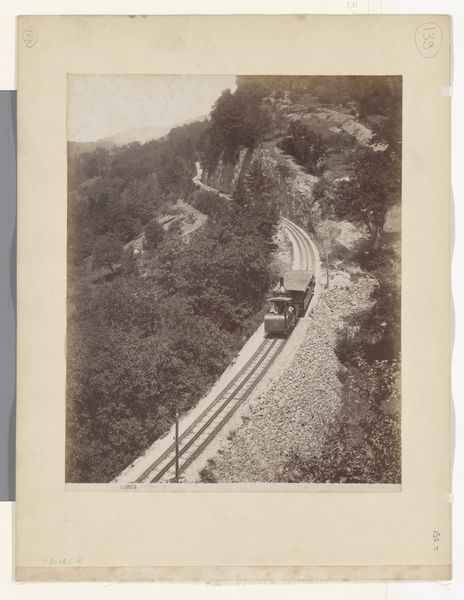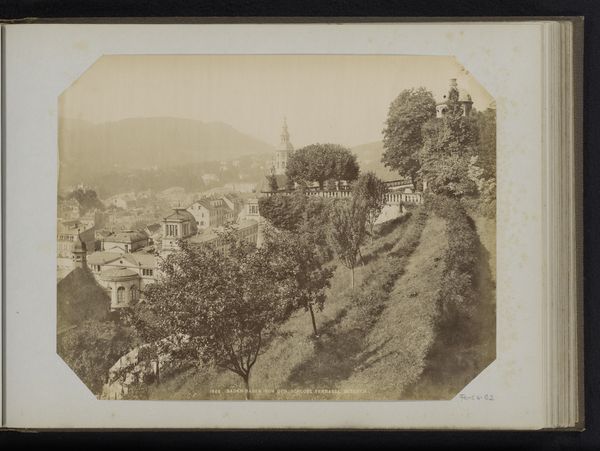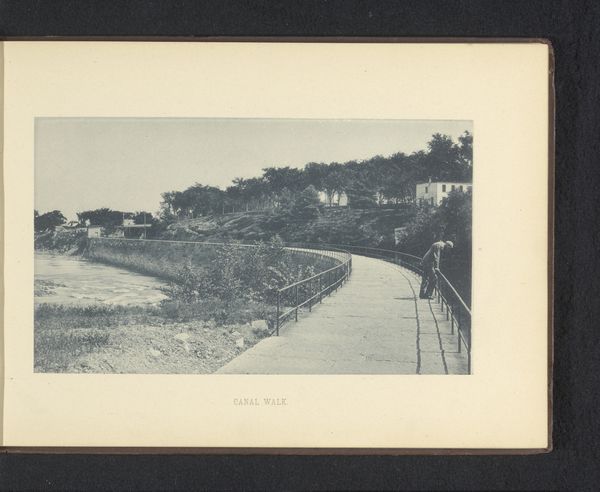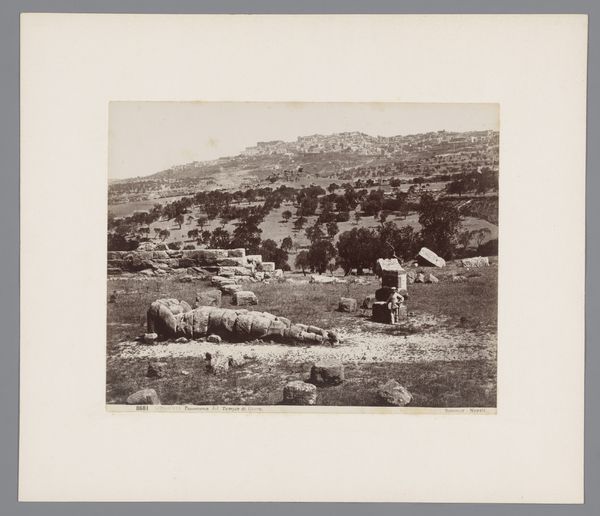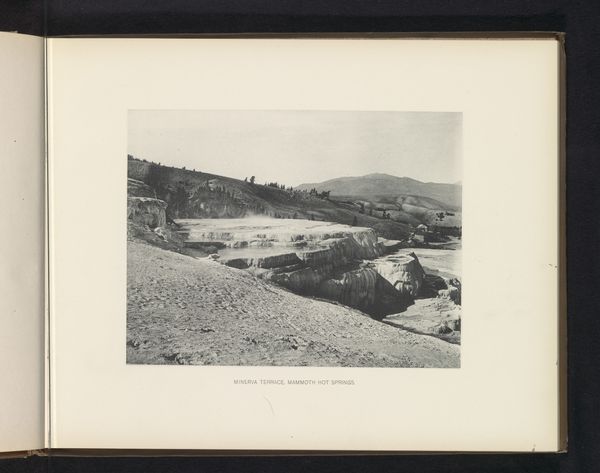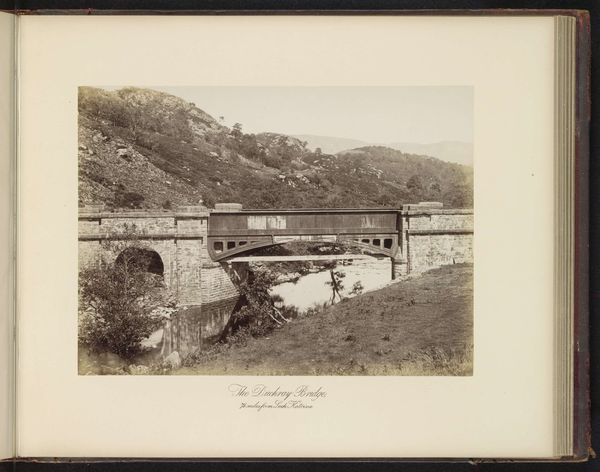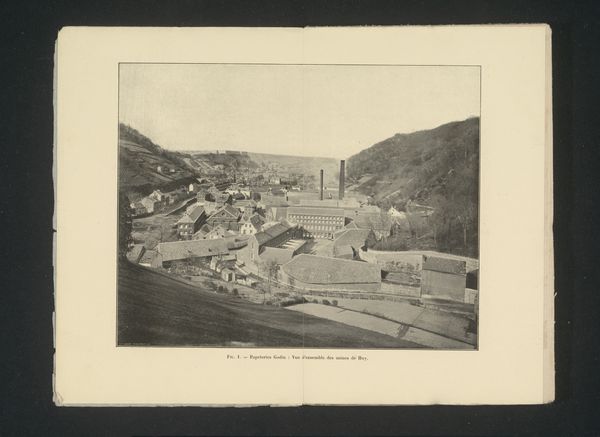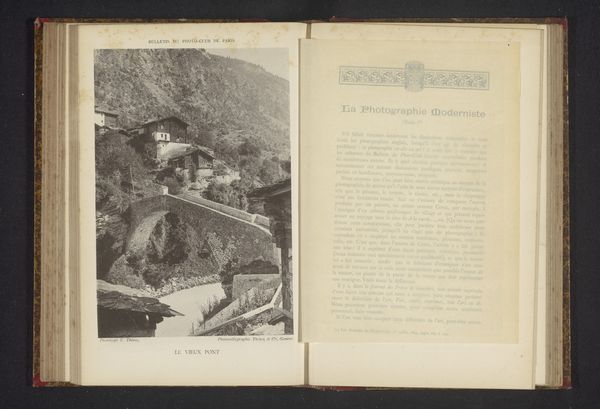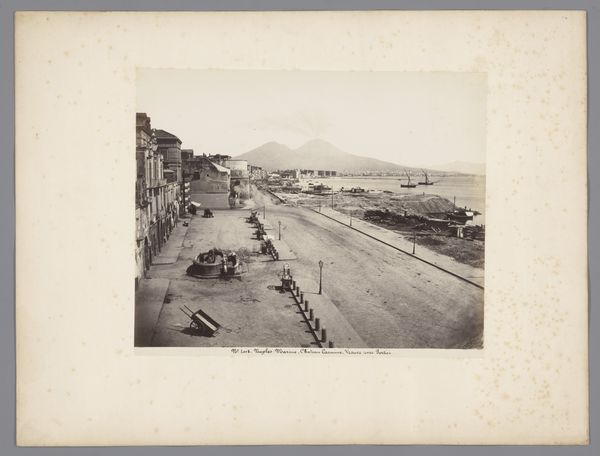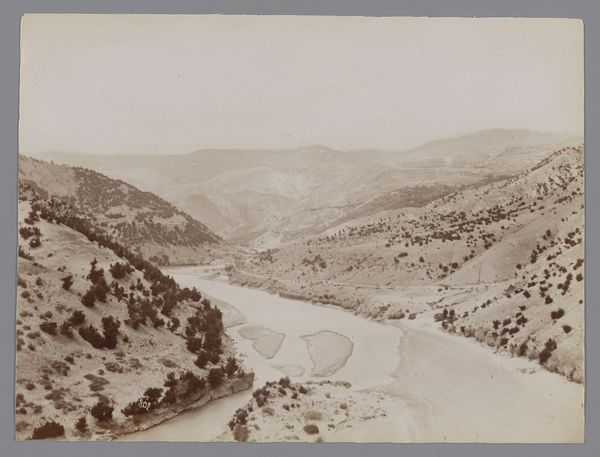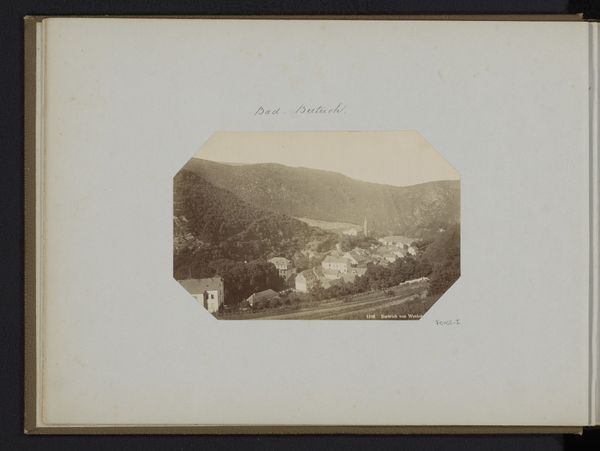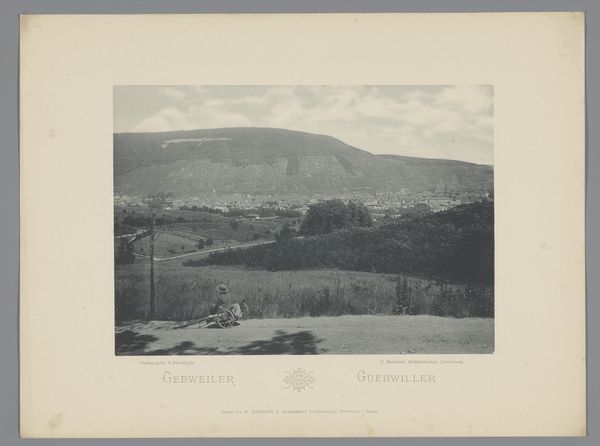
print, photography
#
pictorialism
# print
#
landscape
#
photography
#
mountain
Dimensions: height 207 mm, width 263 mm
Copyright: Rijks Museum: Open Domain
Curator: The “Tandradspoorlijn op de Salève” a photographic print from sometime between 1895 and 1910, presents a striking image. It captures a cog railway snaking its way up the Salève mountain. The stark, monochrome palette lends a certain drama. What's your first impression? Editor: The photograph possesses an unsettling quietness. It seems to emphasize human interventions in an otherwise sublime landscape. There is that inevitable tension I see in it: technological "progress" encroaching on untouched nature. Curator: Absolutely. Consider the materials. This is a manipulated photographic print made with Pictorialist sensibilities. Think about the labour involved, too, not only in producing the photograph itself but in building that very railway. It changed accessibility but reshaped labour dynamics and industrial progress. Editor: It's hard to ignore the implications of this industrial encroachment on what would have been a relatively inaccessible space. Who was afforded access by this railway? Whose labor made it possible? And at what environmental cost? Early tourism changed mountain ecologies profoundly. Curator: Precisely, who benefited and at whose expense? And we must consider the environmental impact too. Those construction practices weren't as environmentally aware. What do we gain, and what do we lose when technology triumphs? The photographer might not be overtly criticizing progress, yet the image inadvertently asks us those very questions. Editor: Yes, and the image resonates powerfully today, considering our urgent need to address climate change and grapple with sustainable ways forward. How can we honor the legacy of those spaces and those affected by such changes? The act of building a railway alters power dynamics— who owns it, who controls it, and what are its benefits, culturally and financially? Curator: Exactly. What initially seems like a quaint, historical image of progress and picturesque nature invites much larger debates about our own time, I think. Editor: I agree. Examining historical images allows for greater and critical analysis of what the idea of 'progress' really looks like. Thank you! Curator: You're very welcome. Thank you for those stimulating thoughts.
Comments
No comments
Be the first to comment and join the conversation on the ultimate creative platform.
